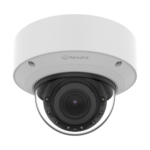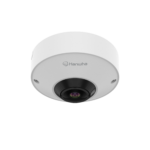2024.11.27
Showcase the Full ROI of Surveillance Investments by Engaging Cross-Functional Business Partners

Jason Swanson, Business Development Manager for Restaurants & Retail at Hanwha Vision America, discusses the advantages of collaborating with other departments when assessing video surveillance investments and the impacts of AI-powered video surveillance solutions in various aspects of business.
Security professionals can greatly benefit from collaborating with colleagues in other departments when evaluating video surveillance investments. That’s because modern AI-enabled video surveillance systems can deliver returns-on-investment (ROI) that positively impact security, as well as many other business functions.
For example, marketing, operations, human resources, risk, IT and loss prevention teams, can all leverage the benefits of advanced analytics and AI capabilities contained within modern surveillance systems.
Increasingly, AI-powered camera systems are transforming industries such as specialty retail and quick service restaurants (QSRs). These systems provide robust business intelligence that can help enhance security and enable marketers, operators, HR, risk, and loss prevention teams to:
- Drive customer engagement;
- Improve operational efficiency;
- Effectively market products;
- Maintain employee safety and reduce risk;
MARKETING AND OPERATIONS
Customer Behavior Analysis
With Hanwha Vision’s advanced AI-enabled cameras and end-to-end surveillance solutions, businesses can precisely analyze customer behavior in real-time, tracking movements and interactions with in-store displays, product placements, and promotions.
For retailers specializing in sectors like automotive, fashion, electronics, or sporting goods, this data allows marketers to optimize store layouts, adjust product placements, and fine-tune marketing campaigns based on customer engagement levels. In addition, they can utilize this data to complement information gathered from other customer relationship management (CRM) tools.
In full and quick service restaurants, video surveillance data analysis is especially valuable. AI cameras can help track customer attention on promotional food or beverage items, providing insights into what menu items attract interest and how this translates to sales.
For example, a fast-food chain can use AI to see if a new limited-time burger promotion is driving higher engagement and whether customers end up purchasing it.
Foot Traffic & Staffing Optimization
Retailers can leverage AI video analytics to understand peak hours, seasonal trends, and how these impact sales and staffing needs. This is critical not only for marketing but also for operations.
For example, AI data can show how holiday promotions influence foot traffic, allowing businesses to better allocate staff during busy times or design promotional campaigns that align with customer behaviors.
Restaurants can similarly benefit from AI-driven insights on foot traffic, enabling them to prepare food for high-volume periods and adjust staffing levels to maintain optimal operational efficiency and enhancing customer experience. For instance, AI that recognizes and reacts to queue length and wait times in small increments can help ensure proper prep and staffing, reducing wait times and improving the overall dining experience by allowing employees to intervene proactively or offer solutions that keep customers engaged during waiting periods.
Real-Time ROI Analysis
AI-enabled surveillance provides marketing and operations teams with an unprecedented ability to measure the direct impact of their campaigns and strategies.
By correlating customer behavior data with sales figures, marketers can understand which promotions drove in-store traffic, how effectively customers engaged with specific displays, and how these efforts impacted overall profitability.
For example, if a retailer runs a seasonal sale, AI cameras can use line crossing and heat mapping analytics to determine how much foot traffic the sale generated and whether customers who engaged with promotional displays ended up purchasing items.
Through the same AI analytics, a FSR or QSR can track how effective its promotions were in increasing sales of a new beverage or meal deal, even in a drive-thru. AI cameras also have the ability to “talk” to other BI tools in order to provide additional data and complement numeric data to create a more holistic representation of business metrics.

HUMAN RESOURCES (HR)
Improved Conflict Resolution and Incident Investigation
With comprehensive camera coverage and video footage, HR professionals can accurately reconstruct workplace disputes, misconduct, or incidents.
This ensures that the process of resolving conflicts, addressing employee grievances, or conducting investigations, if needed, is done as thoroughly as possible, with objective evidence providing the basis for informed and fair decisions.
In retail, for instance, if there’s a dispute about an employee’s behavior during a customer interaction, HR can review the footage to understand what actually occurred and take the appropriate steps. Full coverage ensures that HR has access to all relevant information when documenting incidents, including any follow-up actions taken by management or additional training provided to employees.
RISK MANAGEMENT
Incident Detection & Response
With AI-enabled cameras, companies can easily detect unusual patterns of behavior that may indicate a potential risk or liability issue.
For example, in a restaurant or retail setting, AI can identify when a customer slips or falls and alert the risk team immediately, allowing for faster incident response and documentation. This proactive approach can minimize the impact of potential lawsuits or insurance claims.
AI-enabled cameras can detect the presence of cut gloves, burn sleeves and other personal protective devices – including masks – to ensure compliance with company policies and procedures, ensuring workplace safety and reducing the number of worker’s compensation claims at a location.
Regulatory Compliance & Legal Protection
Risk teams can also leverage AI-powered cameras to ensure compliance with local, state, and federal regulations.
For example, AI systems in QSR kitchens can monitor food handling to ensure hygiene and safety standards are met, protecting the business from regulatory fines. In retail environments, AI can help ensure that accessibility standards are being met, reducing the risk of non-compliance lawsuits.

IT AND DATA MANAGEMENT
Edge-Based AI
AI-enabled cameras often rely on edge-based AI, which processes data directly at the camera level instead of relying on cloud-based systems. This approach can save on bandwidth and cloud storage costs, making the technology appealing to IT and data management teams.
Lower Data Costs
By processing data locally (on the camera), edge-based AI reduces the amount of data that needs to be transmitted to central servers or the cloud, cutting down on infrastructure and storage expenses. IT teams can appreciate these savings, especially in large retail environments with multiple stores or QSRs with many locations.
Streamlined Data Processing
Edge-based AI allows for real-time decision-making without the need for significant investments in additional IT infrastructure. This capability enhances operational efficiency across the board, from security monitoring to customer service improvements.

MAKING THE CASE
Collaborate Early
Bring key department leaders into the conversation when evaluating AI camera systems. Explain how these systems can support their specific goals and objectives.
Present Use Cases
Use specific examples tailored to each department. For example: for marketing, focus on customer behavior analysis; for HR, emphasize workplace safety and compliance monitoring; for risk management, highlight fraud detection and loss prevention.
Emphasize ROI
Stress that AI cameras do more than enhance security—they deliver measurable improvements in customer engagement, employee productivity, compliance, and operational efficiency, and customer experience, all while making a safer environment for both customers and employees. When multiple departments benefit, the ROI of the investment becomes clearer.
Suggest Budget Sharing
Propose that departments with overlapping interests contribute to the investment in AI surveillance. For example, HR and marketing teams can share in the cost of cameras that provide insights into customer and employee behavior, while loss prevention and risk management can fund cameras that detect theft and fraud.
CONCLUSION
Security professionals remain the cornerstone in the selection and implementation of AI enabled cameras and end-to-end surveillance decisions. But since today’s AI-enabled systems offer significant insights that benefit multiple departments, collaborating with colleagues from other functions is more valuable than ever.
Engaging cross-functional colleagues allows security professionals to provide better – and more accurate – ROI reporting, demonstrating the full value its video surveillance investments can deliver to an organization.
Also, getting buy-in from marketing, operations, HR, IT, and risk management teams, may encourage shared budget contributions.
When all departments understand how AI cameras enhance business insights and operational efficiency, it becomes easier to justify the investments. This collaborative approach not only addresses security needs but also shows how the right video surveillance investment can enhance profitability, improve customer engagement, optimize operations, and simplify compliance monitoring and reporting.


